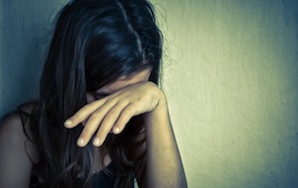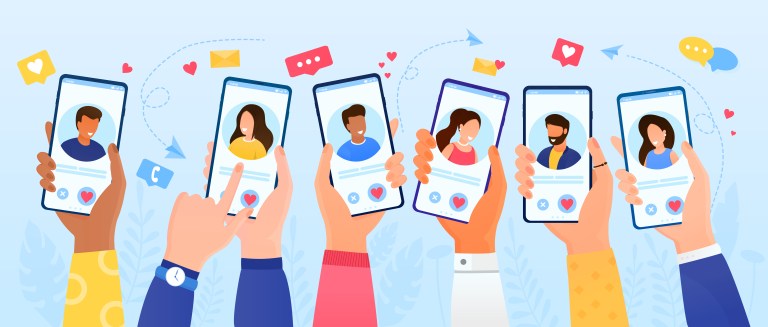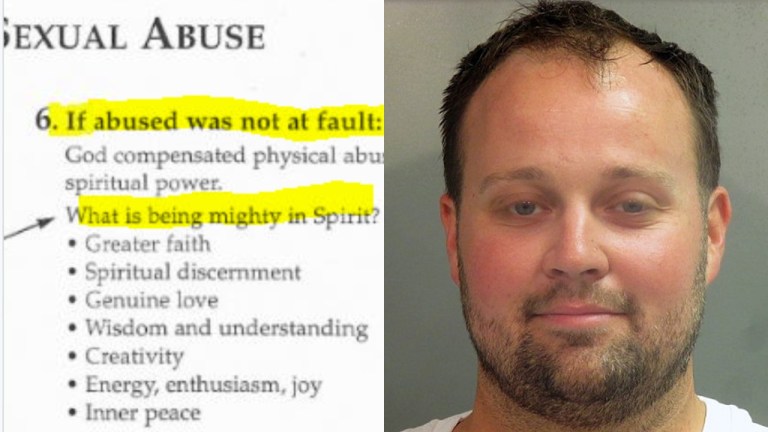Bisexual Women Twice As Likely To Be Abused And/Or Raped, Study Says
I was not abused or sexually assaulted as a child or any time before I realized there was a word for what I was when I was about 12 years old. So no abuse or assault "made" me this way.
By ![]() Gaby Dunn
Gaby Dunn


The CDC recently released the first nationwide study to break down domestic violence and rape statistics by self-identified sexual orientation. Lesbians and bisexual women are at higher risk for sexual assault and abuse than straight women, and bisexual women especially are twice as likely to have experienced abuse.
Media outlets jumped to conclusion-town. Many asked, “Are they trying to say that women ‘become’ bisexual as a result of sexual assault by men?” (Whenever I type that I imagine a beautiful bisexual cocoon where we all emerge as bisexual butterflies. Anyway!) I went through and read the whole study and I don’t think that is what they’re saying. But also, I don’t buy that logic or “explanation” for bisexuality, which has been a thing in people since people started being a thing.
I am a bisexual woman (self-identified, ha) so I was worried that this CDC report would write off bisexuals, yet again, as being “messed up” or “damaged,” insisting that bisexuality is the “result” of something — trauma or lack of boundaries or whatever. I never really understood that thinking. As far back as I can remember experiencing attraction, I have not had a gender preference. As far as I know (and I’d say I’m 99.9 percent sure), I was not abused or sexually assaulted as a child or any time before I realized there was a word for what I was when I was about 12 years old. So no abuse or assault “made” me this way.
Since I “came out” at least privately to myself when I was a tween, I’ve been in one relationship I alternate between describing as “abusive” and “pretty messed up.” But again, I don’t think my bisexuality had anything to do with choosing to get involved with that person. You could maybe say my low self-esteem from grappling with coming out (among other things) made me more inclined to find this person attractive, but more on that in a bit.
While I’m all for studies on domestic violence and sexual assault that will hopefully lead to more awareness and solutions for abuse victims, I’m still wondering what this study means to say.
First, here are some questions I had that were answered by reading the whole study, so we can get on the same page:
What is their criteria for sexual assault/abuse?
The criteria appears to be stalking, sexual violence and violence by an intimate partner. Rape is actually broken down very specifically in the study to include unwanted sexual contact, coercion, and non-contact unwanted sexual abuse (like masturbating in front of someone). It’s actually very thorough.
How many people did they interview?
16,507 adults — men and women.
What do they mean when they say bisexual women have a higher risk of abuse?
They have a higher “lifetime prevalence” for abuse by both partners and unknown perpetrators. That means overall in their lives, they are twice as likely to experience domestic abuse and sexual assault by both people they know and people they don’t. It doesn’t say when the abuse occurred so there’s no way to link this study to the idea that abuse “turned” a woman bisexual or influenced her decision to date women (because of, let’s say, bad experiences with men). It’s a chicken and the egg situation. That being said, bisexual women were twice as likely as heterosexual women to have been raped for the first time during puberty, between the ages of 11 and 17, which I’ll expand on below. Bisexual men also reported a higher percentage of experiencing sexual violence than heterosexual men though the study does not say between what ages they most reported being abused.
What are the exact numbers?
Without percentages, the study found that 1.5 million bisexual women reported being raped during their lifetime.
More specific numbers taken from the study: The lifetime prevalence of rape by any perpetrator was, for women: Lesbian – 13.1 percent, Bisexual – 46.1 percent, and Heterosexual – 17.4 percent. That’s…pretty staggering.
The lifetime prevalence of sexual violence other than rape (including being made to penetrate, sexual coercion, unwanted sexual contact, and non-contact unwanted sexual experiences) by any perpetrator was, for women: Lesbian – 46.4 percent, Bisexual – 74.9 percent, Heterosexual – 43.3 percent. Ninety-eight to 99 percent of bisexual and heterosexual women said their perpetrator was male. (Interestingly, more than half of men reported their sexual assaults were perpetrated by women, but that’s another story for another day.) Bisexual women are also twice as likely to experience abuse, rape and stalking by an intimate partner.
Okay, so going by that information (and excusing that some people might report more fluid sexualities or different sexualities or genders, etc), my theory is that the reason bisexual women have such higher claims to sexual assault and abuse is because they are ignored by both the straight and the LGBTQ communities. They have less support and are more inclined to feel worthless or misunderstood or ashamed. There need to be more resources and help available specifically to the B part of LGBTQ. (A survey last year found bisexuals more inclined to anxiety and depression too, as a result of their outsider status in both groups.) As the study says,
First, the high levels of violence experienced by bisexual women and the high levels of sexual violence other than rape experienced by bisexual men suggest a particular need for services and support systems focused on bisexual women and men.
The bisexual (and lesbian) women in the study were also more likely to experience repeat attacks, meaning these new services for bisexuals should perhaps focus on lessening the shame and internalization of what’s happened to them. This could help prevent re-victimization. Since many of the bisexual women reported being raped from ages 11-17, the study suggests more effort be put into support for LGBTQ youth, so they can feel less shame and experience less struggle with their sexuality — all of which may put them at higher risk for sexual abuse. (Not to blame the victim, but to put in place prevention programs from high-risk behaviors like covert Grindr meet-ups with creeps, being taught to be strong and value yourself so as not to get in relationships with abusers, etc.)
So this is TONS of information, but basically: the why of being bisexual is irrelevant. The conclusion of this study is that more support, understanding and resources are needed for all LGBTQ victims of abuse and sexual violence because it’s seriously messing with us. The numbers are right there to prove it. 




